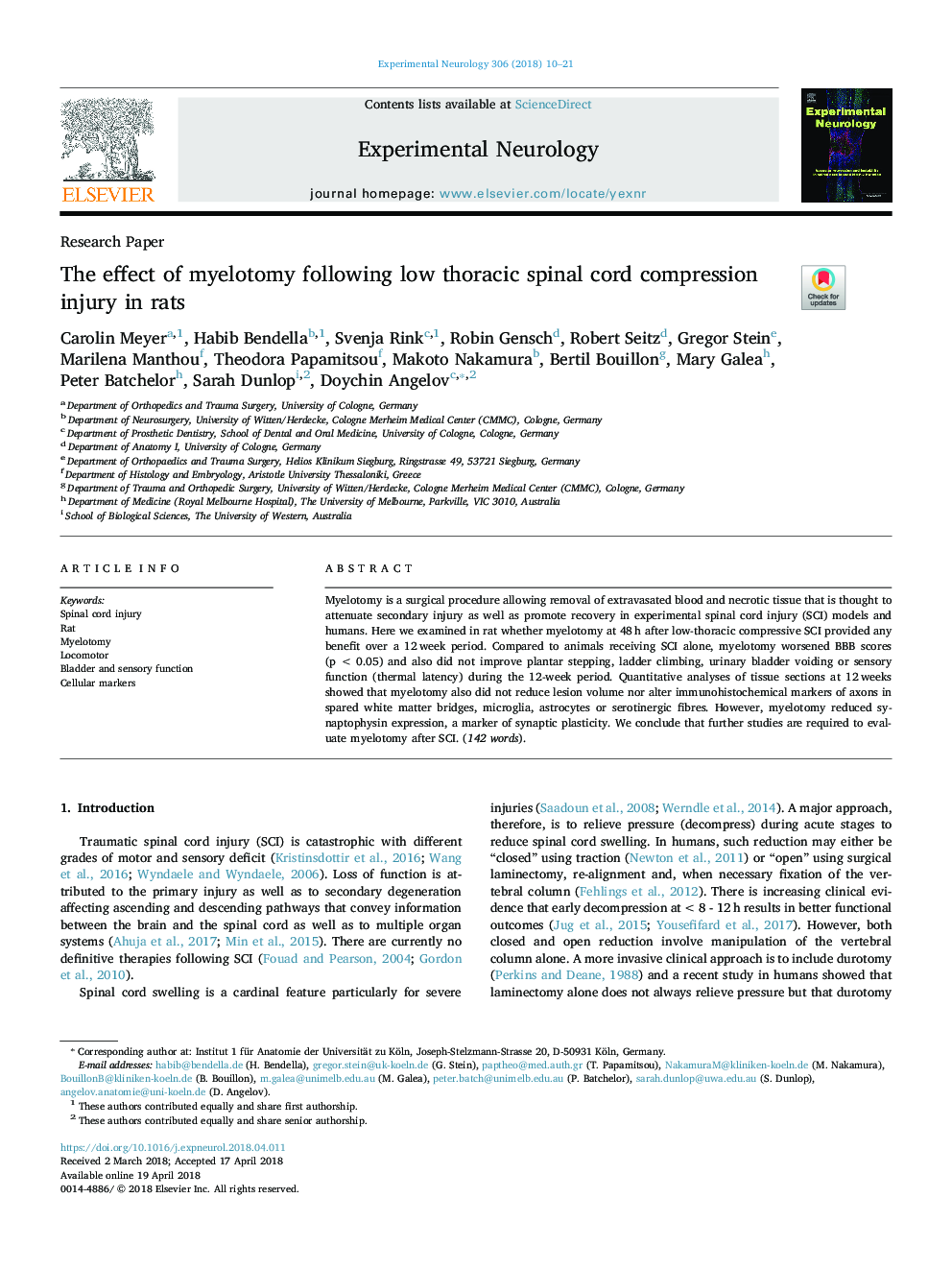| Article ID | Journal | Published Year | Pages | File Type |
|---|---|---|---|---|
| 8684579 | Experimental Neurology | 2018 | 12 Pages |
Abstract
Myelotomy is a surgical procedure allowing removal of extravasated blood and necrotic tissue that is thought to attenuate secondary injury as well as promote recovery in experimental spinal cord injury (SCI) models and humans. Here we examined in rat whether myelotomy at 48â¯h after low-thoracic compressive SCI provided any benefit over a 12â¯week period. Compared to animals receiving SCI alone, myelotomy worsened BBB scores (pâ¯<â¯0.05) and also did not improve plantar stepping, ladder climbing, urinary bladder voiding or sensory function (thermal latency) during the 12-week period. Quantitative analyses of tissue sections at 12â¯weeks showed that myelotomy also did not reduce lesion volume nor alter immunohistochemical markers of axons in spared white matter bridges, microglia, astrocytes or serotinergic fibres. However, myelotomy reduced synaptophysin expression, a marker of synaptic plasticity. We conclude that further studies are required to evaluate myelotomy after SCI. (142 words).
Related Topics
Life Sciences
Neuroscience
Neurology
Authors
Carolin Meyer, Habib Bendella, Svenja Rink, Robin Gensch, Robert Seitz, Gregor Stein, Marilena Manthou, Theodora Papamitsou, Makoto Nakamura, Bertil Bouillon, Mary Galea, Peter Batchelor, Sarah Dunlop, Doychin Angelov,
